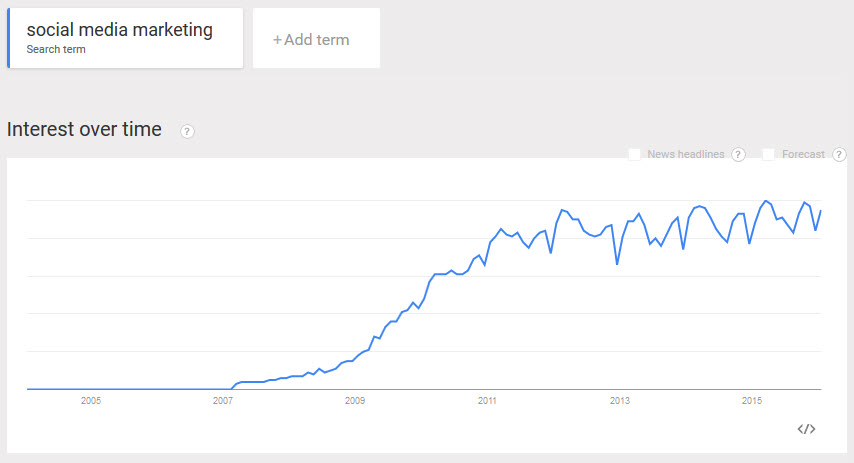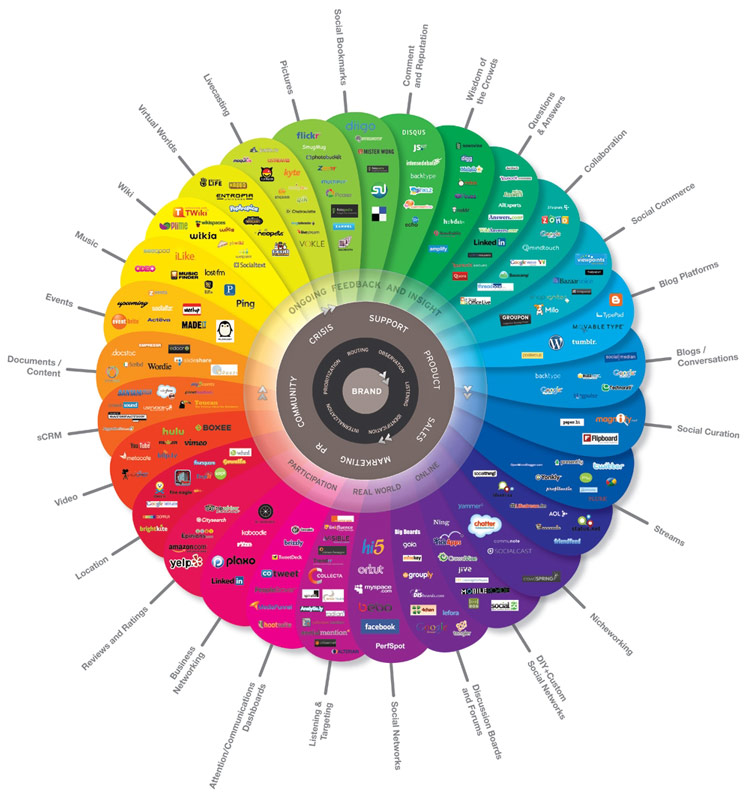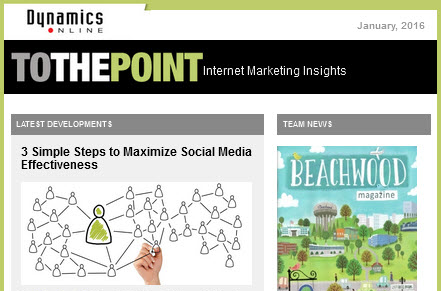3 Steps to Maximize Social Media Effectiveness
Social media marketing is a hot topic among marketers and business owners.
The attention is well deserved.
According to a Pew Research study, 76 percent of online adults use at least one social media platform. The same study also reported that men and women tend to use social media at a similar rate. The Google Trends graph below shows clear growth in “social media marketing” over past last decade.

All of this data showcases a worldwide trend and opportunity. Like eating, sleeping and breathing, social media is an integral part of life.
In order to capitalize on social media, businesses must first learn how to interact with social platforms.
Why Most Businesses Fail at Social Media Marketing
Social media is currently one of the most prevalent forms of communication and news dissemination. Yet, many businesses fail to realize that social media was not created for marketing. Social media users frown upon marketing disturbances and blatant self-promotion. This can be remedied using the 3 steps below when outlining a plan.
Step 1) Set Goals, Objectives and Measurement Metrics
The success of a social media marketing strategy is easiest to measure when coupled with easy-to-understand objectives and performance indicators. Identifying goals and setting objectives before starting campaigns helps create a tighter focus. This can improve the quality of the messages and the overall campaign (organic and paid).
- Identify goals
- Set objectives
- Choose success metrics
This could translate into:
- [Goal] Increase fans on Facebook
- [Objective] Gain 75 fans within a 90 day period
- [Measure] Determine if 75 fans followed page. Also determine if increases led to better post reach
Expect to make changes as time passes and more data becomes available.
Step 2) Choose the Right Social Media Channels

Image Source: Wikipedia
Social media platforms are not equal.
Each has a specific purpose and a unique set of users. For example, Twitter targets early adopters between the ages of 18-29, while Facebook is popular with a much broader demographic.
The best way to choose the correct social media channels is by first identifying target audiences and campaign goals.
Here are some ideas:
- A company producing custom backpacks would benefit from creating YouTube videos showcasing each product
- Restaurants can leverage visual social media platforms, such as Instagram and Pinterest, to share images of their dishes with younger audiences
- Business-to-business companies can create a professional LinkedIn profile and populate it with relevant content that links back to a blog on their website
- A fast-paced technology company could focus on Twitter and Facebook to capitalize on early adopter audiences and larger demographic segments
Step 3) Create Conversations
Social media was created for communication and information sharing. The ultimate goal of social media for businesses is to create a community that converses and shares information.
How do you create conversations?
The easiest way to create a conversation is by developing user-mindset and sharing great content (stay within company social media policy guidelines!)
- What would entice you to join a conversation?
- What would add value and drive you to click a button or link?
- What would make you want to share the content?
- What types of messages would you ignore?
By thinking like the user, businesses can improve the conversational elements and engagement of social posts.
Conversational Tips
Always focus on creating presence, value and consistency.
- Questions are always great conversation starters because they allow users to express their opinion.
- Leverage the news to create conversations that tie back to a specific product or service.
- Create an image contest based commenting or sharing.
By following these three steps, businesses will be better prepared to maximize social media marketing efforts.
How We Help
Dynamics Online can provide the structure needed for social media success. Learn more about our Social Media Strategy services or contact us to discuss your social media needs.


